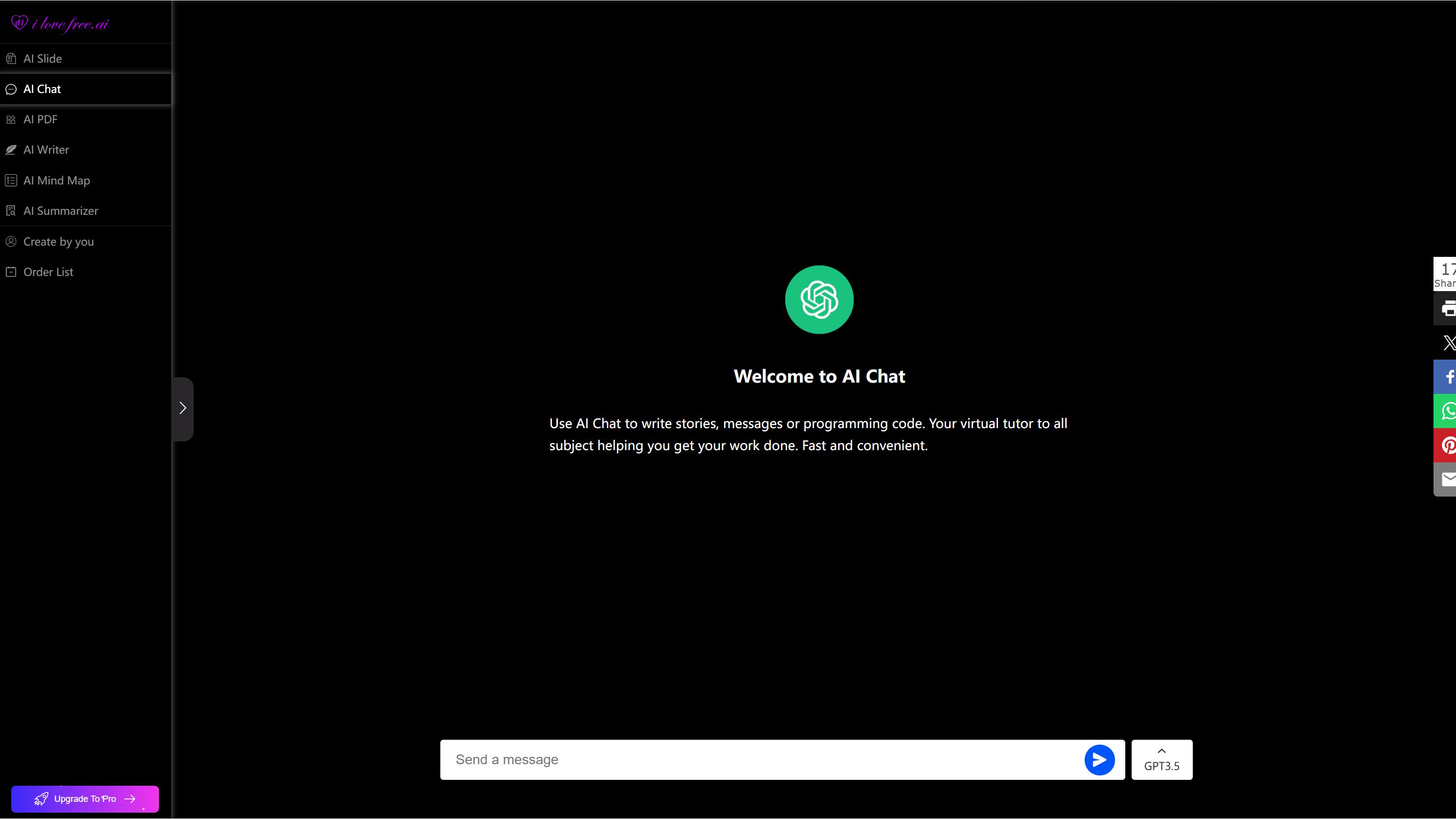
Asking strategically is a very important means for us to use AI tools and tap into the potential of AI.
In today's market, a wide array of AI tools has emerged, leading us to increasingly turn to AI assistants for help with our queries. However, it's not uncommon to find that the responses from AI fall short of our expectations, delivering results that lack value or fail to meet our needs. This shortcoming may stem from the way we pose our questions to AI. By mastering certain questioning techniques and crafting well-structured inquiries, we can significantly enhance the quality of AI's responses, thereby obtaining more satisfactory answers.
AI Capabilities
AI is everywhere these days, but what can it actually do? Let’s break it down:
1. Problem Solving: AI can analyze data and find patterns, using advanced techniques to help solve complex problems faster than humans.
2. Creativity: From writing stories to generating art, AI is stepping into creative fields, though it still needs human input to shine.
3. Automation: It’s great at handling repetitive tasks, like sorting emails or managing schedules, freeing up your time. ( Question: Which industries do you think will benefit the most from AI-enabled automation in the short term? )
4. Learning: AI improves over time by learning from data, making it smarter with each interaction.

Techniques for Crafting Effective Questions
When posing questions to an AI large-language model, it's crucial to be as detailed as possible, enabling the AI to understand the nuances of our needs. To obtain useful information, we must issue clear instructions to the AI, which requires mastering certain questioning techniques.
Sheila Teo, at the inaugural GPT-4 Prompt Engineering Competition organized by Singapore's Government Technology Agency (GovTech), introduced the CO-STAR questioning strategy. This means your question should incorporate five elements: context, objective, style, tone, audience, and response.
Context: Provide background information related to the question. This helps the AI assistant better understand the scenario and purpose of the discussion. For example, you can share your identity, whether you're a student, a teacher, or a novice in a particular field.
Objective: Clearly define the task goal, informing the AI what problem you hope to solve or what result you aim to achieve. One useful technique is to break down complex problems into smaller, more manageable sub-goals.
Style: Specify your writing style, which should be determined according to your identity or the purpose of your question.
Tone: Indicate the tone you wish the AI to adopt in its response. It could be formal, humorous, lively, calm, or any other suitable tone.
Audience: Let the AI assistant know who the target audience of the question is. The audience could be yourself or a specific group. Make sure to be explicit, ensuring that the output content is more accessible to the audience.
Response: Specify the format in which you want the content to be output. Common formats include lists, JSON-formatted data, professional reports, etc. This facilitates the subsequent processing and utilization of the output.
If you're unsure what questions to ask the AI, you can also inquire with the AI. The meta-questioning approach is another effective questioning technique.
For example: "I want to understand the impact of school bullying on children's mental health. What questions should I ask you?" Using this questioning strategy may broaden your thinking and clarify your logic, enabling you to get more useful answers when posing questions.

Next, I'll present a case to demonstrate how to use the CO-STAR questioning technique.
If your question is relatively simple and general:
Help me develop a promotion and marketing plan for an online stationery store.
The AI's response might be something like this:
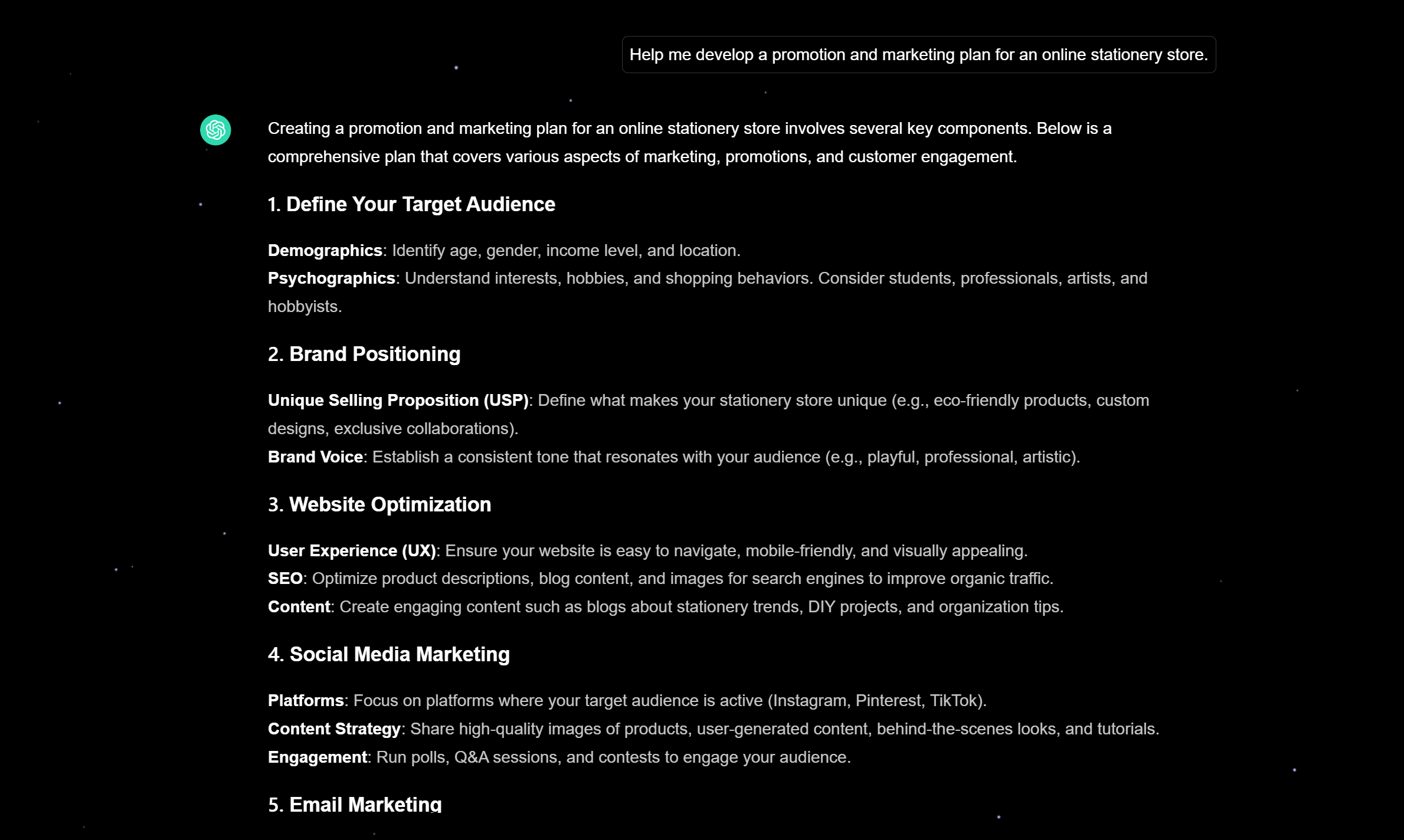
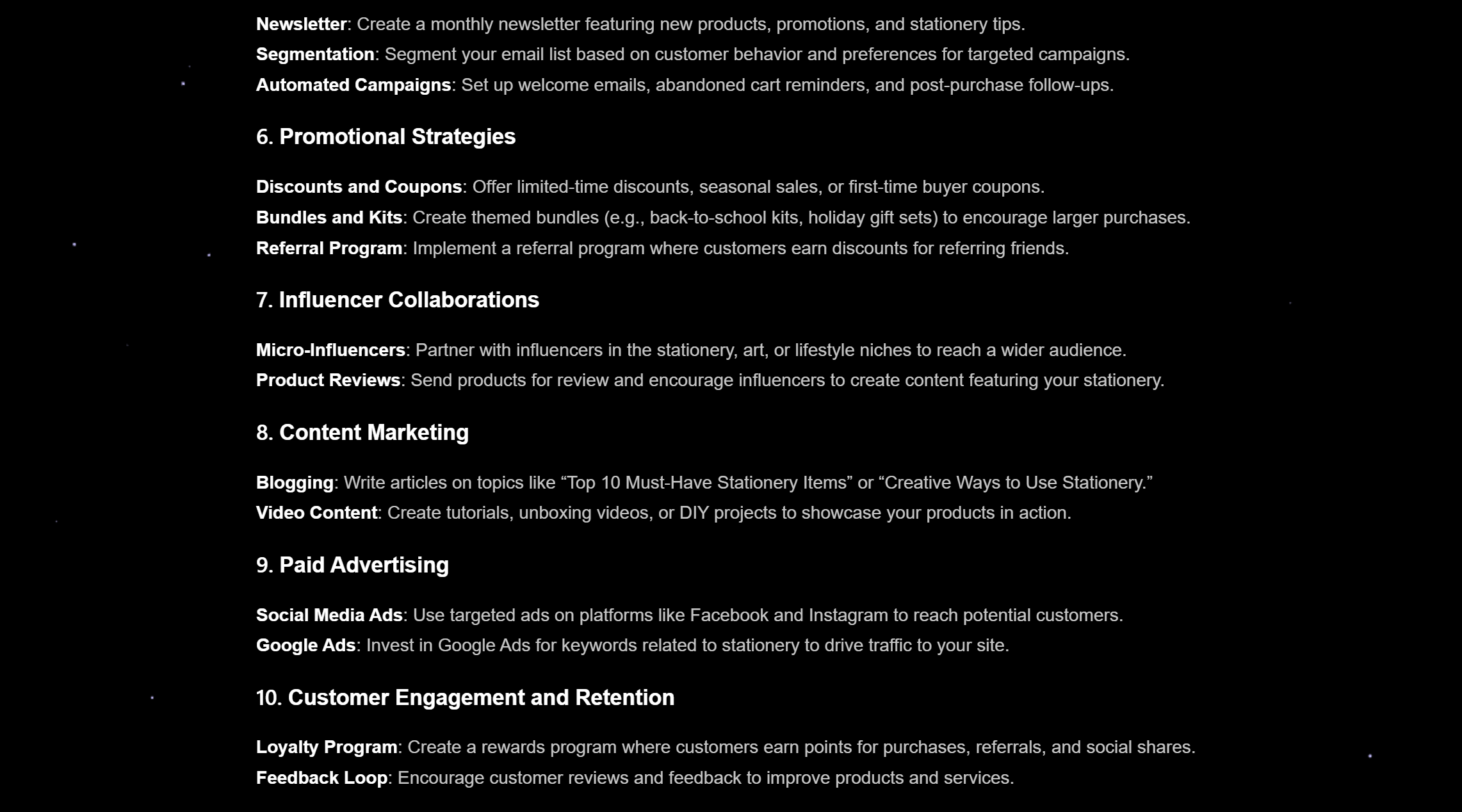
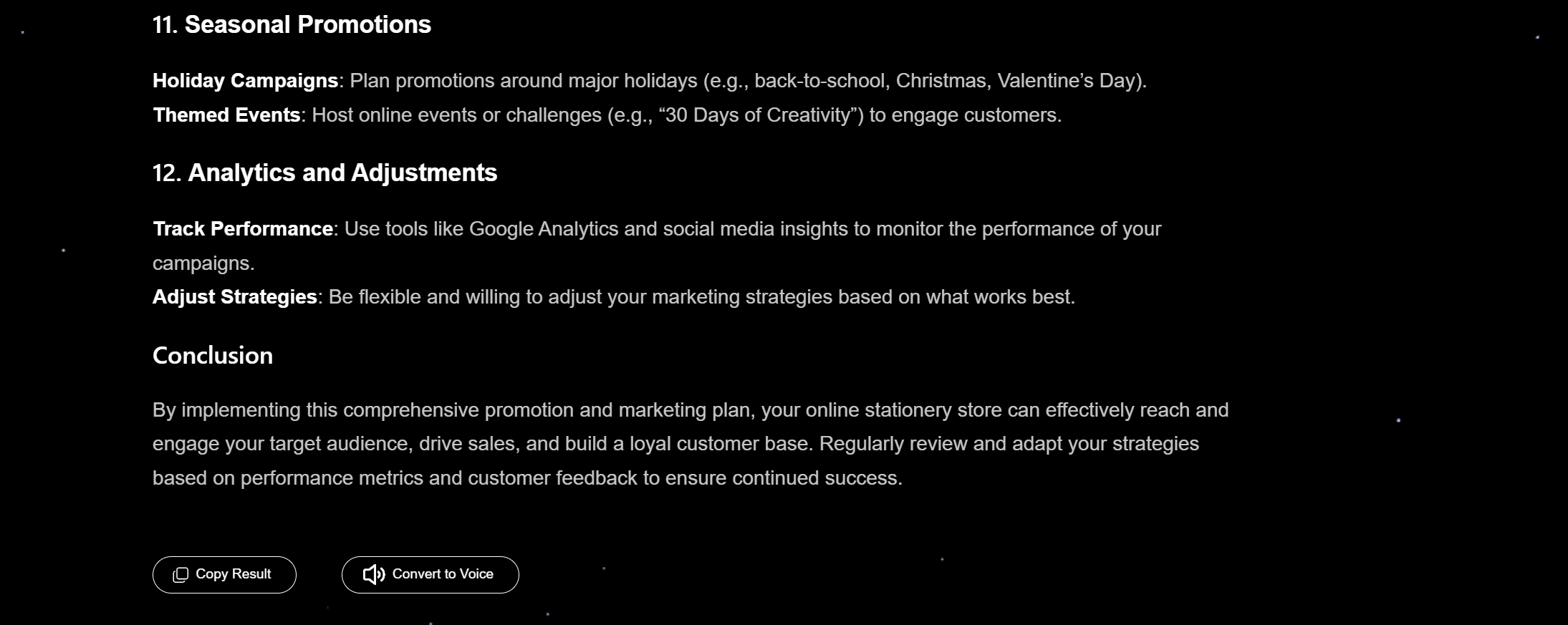
If you ask questions by referring to the CO-STAR strategy:
I am a college student who is about to graduate and planning to start a business by opening an online stationery store. (Context: Provide identity and business startup background information) I hope you can help me formulate a detailed online marketing and promotion plan. (Objective: Clearly define the task objective, which is to formulate an online marketing and promotion plan) Please write it in a concise, clear and practical style. (Style: Specify the writing style) The tone should be positive and encouraging to give me the confidence to execute the plan. (Tone: Specify the response tone) This plan is mainly for my own reference and implementation. (Audience: Indicate that the target audience is myself) Please output it in an organized list format, with no less than 2000 words. (Response: Specify the output format as a list)
The AI's response might be something like this (some of the screenshots):
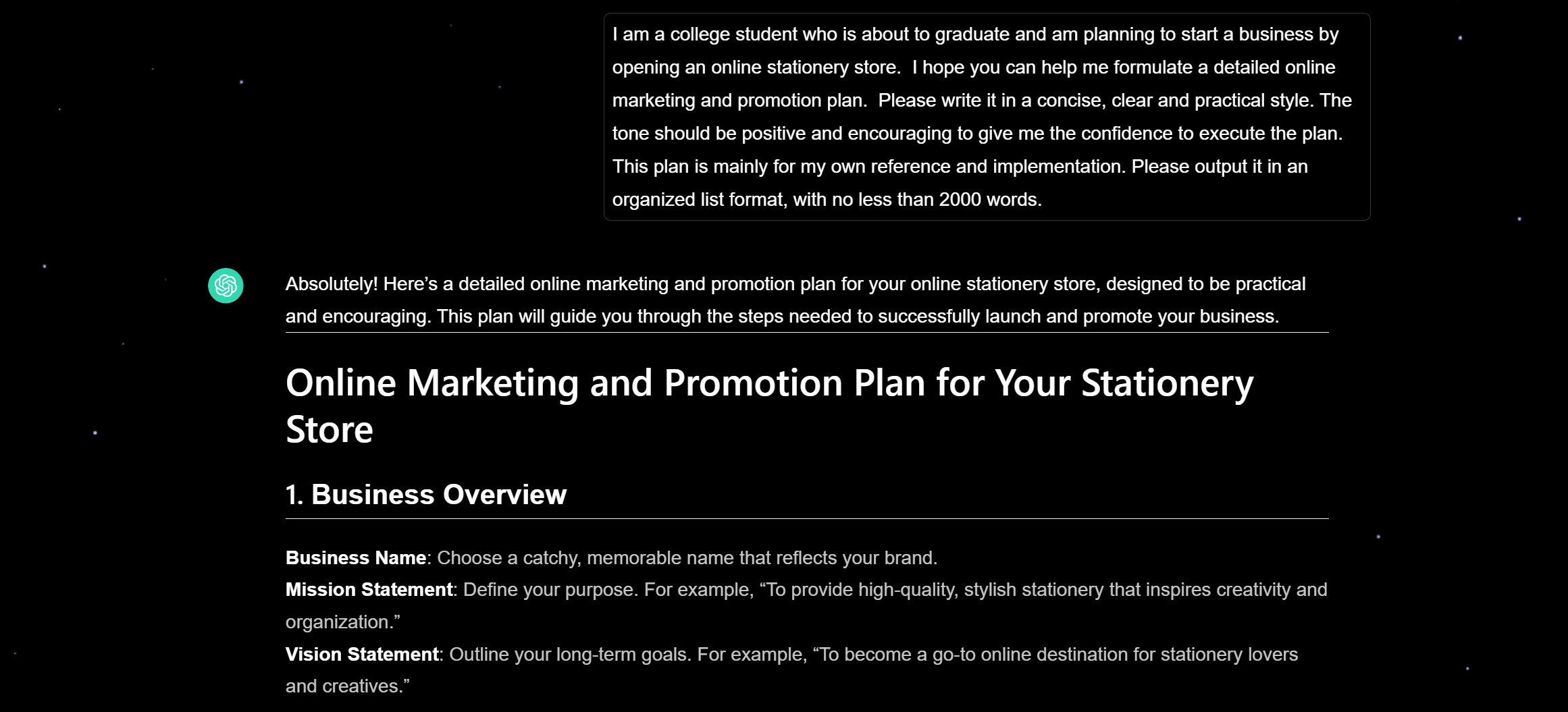
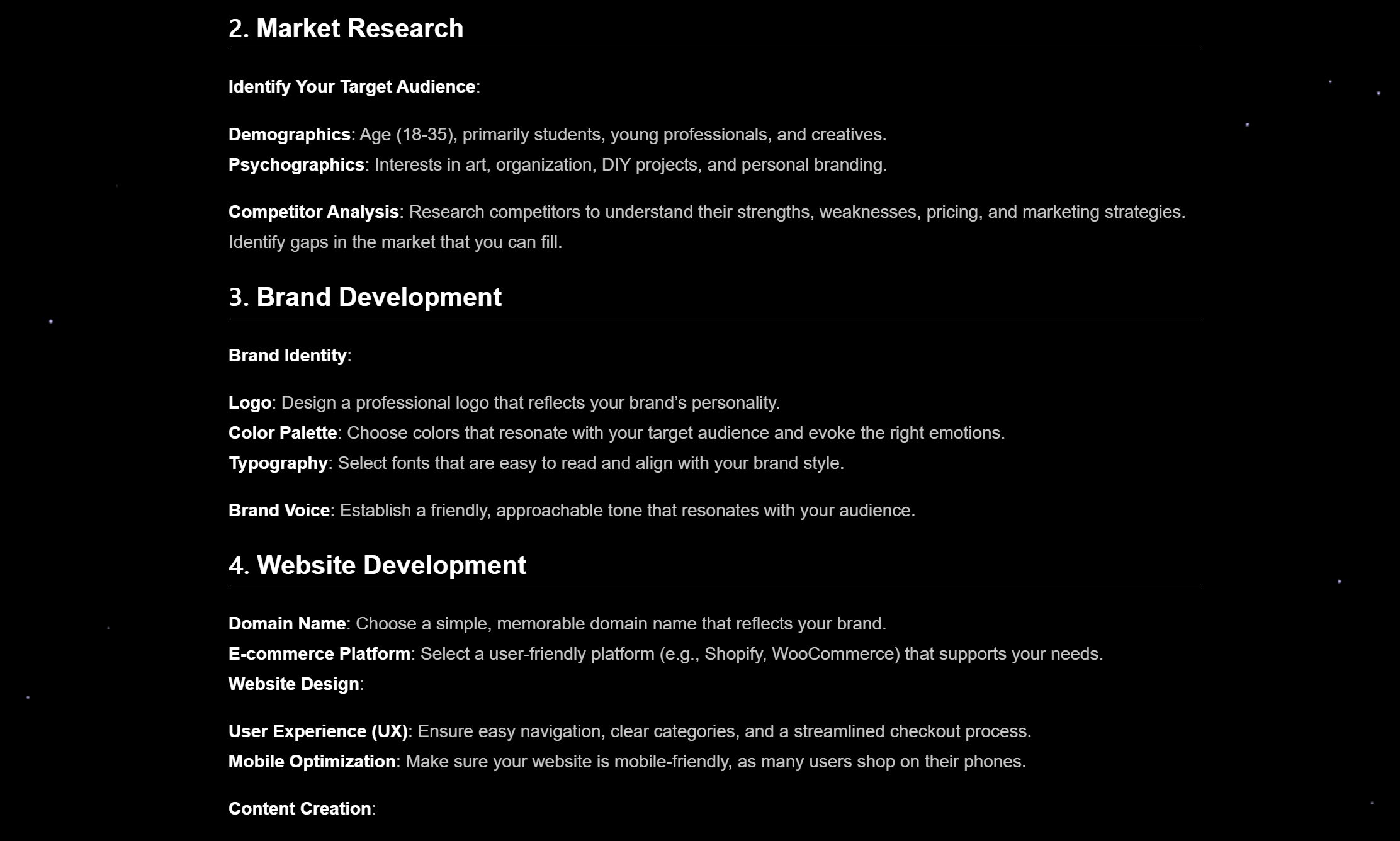
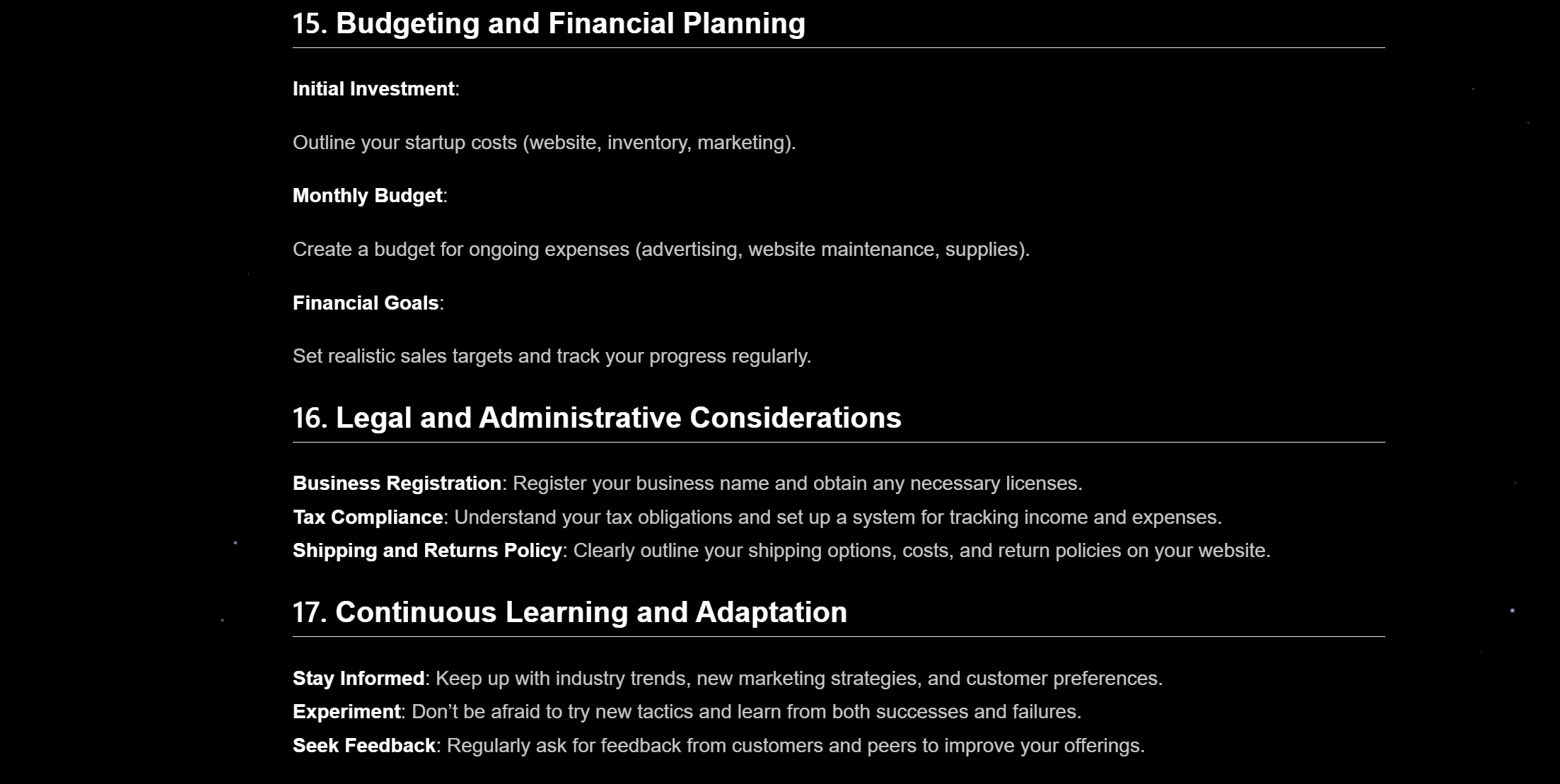

You'll find that for the same question, the results given by AI vary depending on the way you describe it. In the latter response, the AI's answer is more detailed, has a clearer structure, and is more pleasant to read.
So, have you learned this questioning technique? Hurry up and give it a try yourself!
Welcome to try it on Ilovefree. It is a website with a variety of AI functions, and you can unlock the number of usage times just by watching ads.
